36 Unique Value Proposition Formulas with Powerful Examples
In this article, we curate a list of 36 unique value proposition formulas, followed by seven real-world examples. You’ll discover what makes these VPs powerful and how to use them to inspire yours.
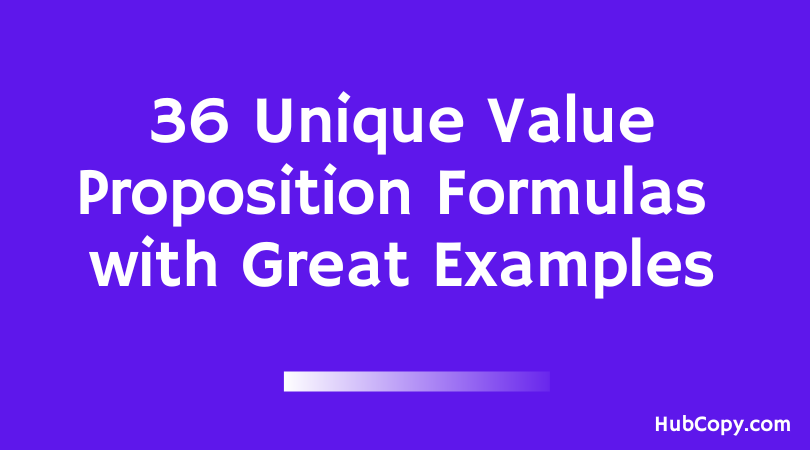
If you understand what a unique selling proposition is and what’s not, you’ll agree that…
A unique selling proposition (USP) is a value proposition. But not all value propositons (VPs) are unique selling propositions (USPs).
And for that reason, we’ll use a single term- unique value proposition- for both in this article.
You disagree? Check out the article above to understand where both terms converge and diverge.
Table of Contents
- What Is a Value Proposition?
- What Are Unique Value Proposition Formulas?
- Elements of Formulaic Unique Value Proposition
- How to Use a Value Proposition Formula
- 36 Unique Value Proposition Formulas to Help Phrase Yours
- 7 Great Examples of Value Propositions and Why They Work
- 5 Benefits Of Unique Value Propositions
- Frequently Asked Questions
- Wrapping up
What Is a Value Proposition?
A value proposition is a clear and concise marketing statement that communicates the unique benefits and value of your product, service, or brand to your target audience. It tells prospects why they should choose you over others in the market.
What Are Unique Value Proposition Formulas?
Unique value proposition (USP) formulas are structured approaches that businesses use to craft effective and compelling statements about the unique benefits of their products or services.
These formulas help capture what sets a business apart from its competitors. They also explain why customers should choose their offerings.
Elements of Formulaic Unique Value Proposition
After analyzing 150+ value propositions and USPs, we identify that every marketing proposition is built on three foundational elements:
- The target audience: Who are they, specifically?
- Their objection/fear/anxiety/pain: What are they running from or want to avoid?
- Their desire/outcome/benefit: What are they running to, looking for, or want to achieve?
A USP can contain either one, two, or even all three elements.
Here’s what a three-legged USP looks like:
{Service/product/company} is a {product/service category} for {target market/unique customer} who {desired outcome} without {objection/fear}.
For example, HubCopy is a Content Writing Service for Bloggers and Solopreneurs Who Want Constant Organic Traffic without Overpaying for SEO and Content.
How to Use a Value Proposition Formula
Formulaic value propositions are in vogue nowadays. But the point isn’t to fit yours into some sort of formula, no matter what.
You can live outside these formulas.
Picking one and slapping it on your homepage all in the name of cuteness is not in your business’s best interest.
You need to first know how to create a selling proposition before worrying about wording it.
“What set you apart?” is a question that begs diligent attention before an answer.
That said. There’s no crime in using a fill-in-the-blank framework, in as much as it doesn’t violate the underlying purpose of your value proposition.
36 Unique Value Proposition Formulas to Help Phrase Yours
Say you’ve agreed with me that using any of these formulas without proper research is a crime against your business.
These 36 unique value proposition formulas will make phrasing yours a five-finger exercise. Here you go:
The “I/We help” Formula
1. We help {Target Audeince} achieve {Desired outcome} with {Product/service}
2. We help {Target Audeince} achieve {Desired outcome} without {Objection/fear}
3. We help {Target Audeince} achieve {Desired outcome} with {Product/service} that {Counter objection/fear/anxiety}
The Product/Category-Led Formula
4. {Product} is built for {target audience} who {trait}
5. {Product/brand} is the {product/service category} for {taget audience} with {similar trait}
6. {Product/Service} helps {target audience} with {trait} achieve {desired outcome} without {objection/fear}
7. The {product/service category} designed for {achieving most desirable outcome}
8. {Product category} made simple for {target market}
The “Only” Framework
9. The only {Product category} designed for {solving a particular problem}
10. The only {Product category} designed for {solving particular problem} without {related fear/objection}
11. The only {Product/service category} that {offers unique benefit}
12. The only {Product/service category} without {common objection/fear}
13. The only {product/service category} to achieve {desired outcome} without {objection/anxiety}
The “Only + Exclusive” Framework
14. The only {Product/service category} designed exclusively for {target market}
14. The only {Product/service category} designed exclusively for {target market} who {trait}
16. The only {Product/service category} designed exclusively to achieve {desired outcome/benefit}
17. The only {Product/service category} designed exclusively to achieve {desired outcome/benefit} with {counter objection}
The “For” Framework
18. For {target audience} who {trait} without {objection/fear}
19. For {target audience} who want {desired outcome/benefit} with {product/service category}
20. For {target audience} who want {desired outcome/benefit} without {objection/anxiety}
21. For {target audience} who want {desired outcome/benefit} in {product/service category}
The “Even if & Reversed Even if” Formula
22. Get {Desireble outcome} even if {objection/anxiety}
23. Even if {objection/fair} you achieve {Desireble outcome}
The Action-oriented Framework
24. Achieve {Something desirable/outcome/benefit} without {objection/fear}
25. Do {Something desirable/outcome/benefit} in an unexpected {way/time/cost}
26. Get {desired outcome} and achieve {something more desirable- often considered impossible or difficult}
27. Get rid of {pain/problem} without {associated trouble/concern/objection/fear}
28. Stop {pain/problem}. {Introduce a solution using any of the other frameworks}.
29. Stop {pain/problem}. {Product/Service} helps {target audience} with {trait} achieve {desired outcome} without {objection/fear}.
The “Now” Framework
The “Now” framework is an extended fashion of the action-oriented framework. Just add now or finally.
31. Now, you can achieve {something desirable/outcome/benefit} without {objection/fear}
32. Finally, you can do {something desirable/outcome/benefit} in an unexpected {way/time/cost}
33. Now you can get {desired outcome} and achieve {something more desirable- often considered impossible or difficult}
34. Finally, you can get rid of {pain/problem} without {associated trouble/concern/objection/fear}
The Comparison Framework
35. Other {products/services} have {objection/anxiety/fear}. {Product X} is different {how}
36. {Product X} has {a problem}. {Product Y} solves it {how}
Now, can you match the following USPs with the right formula? Here you go.
7 Great Examples of Value Propositions and Why They Work
Now, let’s look at seven of the best modern unique value proposition examples and what makes them so effective.
1. Ruggable- The Original Machine Washable Rug
Rugs seem to have a secret pact with dirt. Trying to separate them is a major challenge for homeowners.
Ruggable’s machine-washable rugs provide a straightforward solution to the difficulties and frustrations of cleaning traditional rugs.

By claiming to be the original machine washable rug, Ruggable capitalizes on the rarity of washable rugs in the market, setting itself apart from competitors with this innovative product.
This proposition appeals to homeowners, families, pet owners, and anyone looking for an easy-to-maintenance alternative to traditional rugs.
2. Lemonade– Forget Everything You Know About Insurance
Customers often find insurance processes complex, time-consuming, and lacking transparency.
Lemonade introduces simplicity and a more customer-centric approach to insurance.

Lemonade targets customers who are tired of traditional insurance’s bureaucracy. It promises friendly policies, quick claims processing and more to appeal to these people.
Its value proposition signals a departure from the status quo and presents Lemonade as a transformative force. It gives insurers the needed break away from old insurance practices.
By encouraging them to forget prior negative experiences, Lemonade taps into the desire for a fresh start and promises a simpler and more transparent way of handling insurance.
3. Freshbooks- Accounting Software Built for Business Owners and Accountants
FreshBooks targets two distinct yet interconnected audiences: business owners and accountants.
The VP broadens FreshBooks’ reach as it accommodates business owners who want to handle their finances as well as professionals.
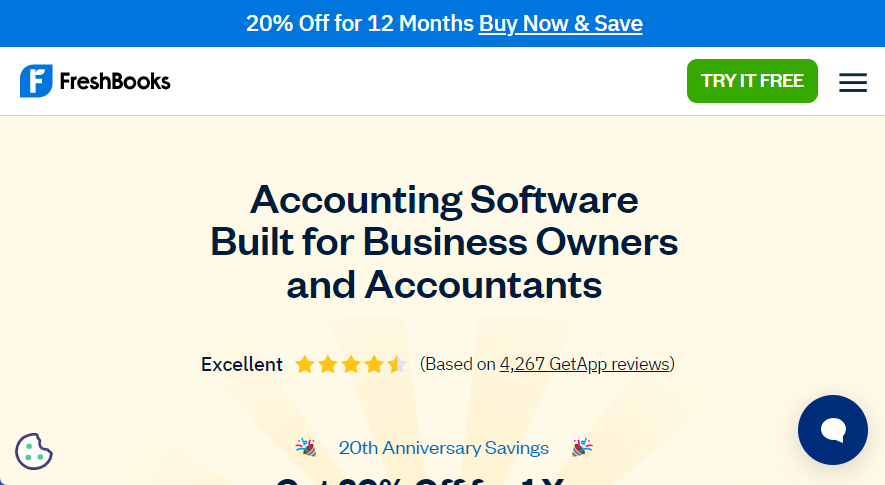
The phrase- “built for business owners and accountants” positions FreshBooks as a software solution that understands and caters to the distinct requirements of both groups. This specialization sets FreshBooks apart from generic accounting software.
4. ConvertKit– The creator marketing platform
ConvertKit is an all-in-one marketing platform for creators across various domains, including musicians (collection/album), authors (book), podcasters (podcast), and content creators (newsletter).
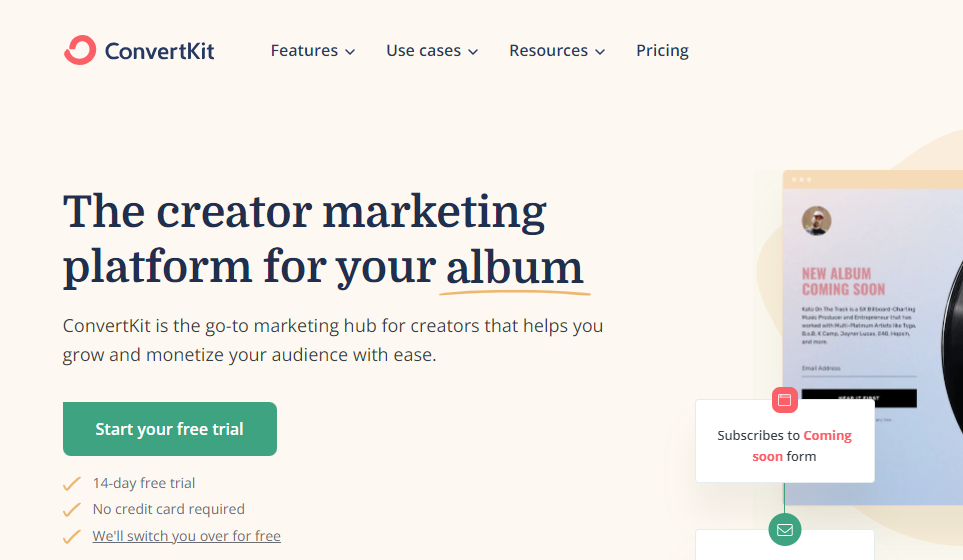
Unlike generic marketing tools, ConvertKit acknowledges the unique challenges faced by creators.
Its emphasis on being the creator marketing platform demonstrates exclusivity in catering to their marketing demands.
5. Webflow– Build with the power of code — without writing any
Webflow is at the intersection of no-code website builders and coding knowledge.
Creating websites with unique designs and interactive features often requires custom coding.
However, most business owners lack coding expertise.

Webflow value proposition promises the benefits of coding without the complexities of coding.
Webflow targets designers, entrepreneurs, and small business owners seeking more control over their website’s design and functionality.
6. Stripe– Payments infrastructure for the Internet
Stripe offers payment processing services and the infrastructure to make online transactions secure and reliable.
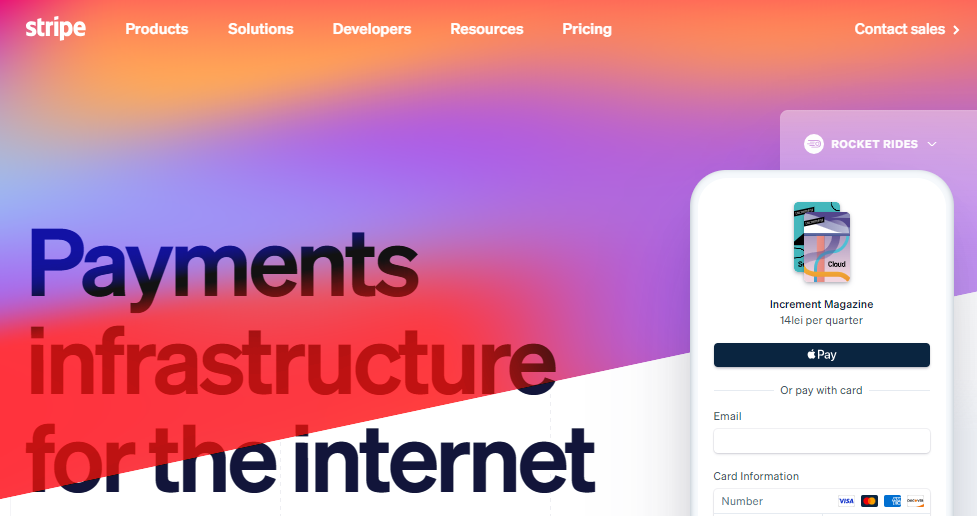
The focus on payment infrastructure highlights Stripe’s specialization in the intricate mechanics of processing payments.
That sets Stripe apart from more general payment processors and emphasizes its role in enabling the online economy.
Stripe caters to businesses of all sizes. This includes e-commerce websites, online marketplaces, and subscription services.
7. Smartsheet– The enterprise work management platform
There are several project management tools. While some claim to be all-in-one, others say they are for small businesses and freelancers.
Smartsheet’s value proposition differentiates it as the project management platform for professionals who grapple with the complexities of managing large-scale projects and teams.
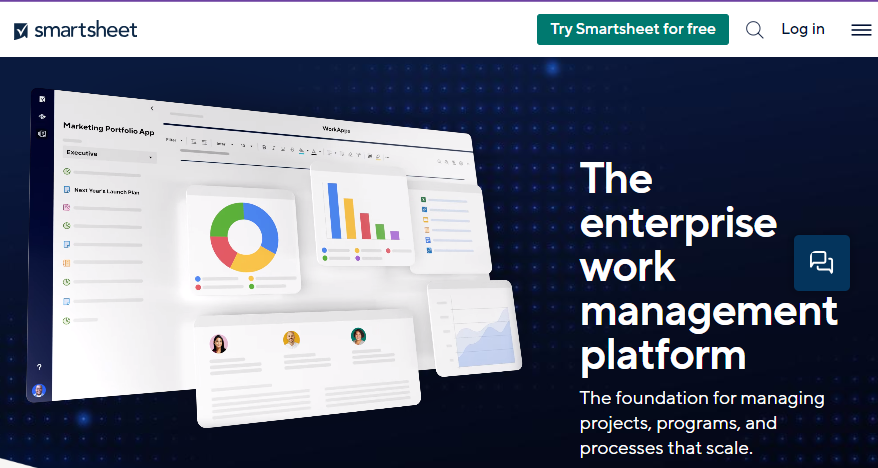
It communicates its role as a comprehensive solution designed to streamline and optimize work processes within large organizations.
Managing a large cross-functional team requires more than just the right skill set. A centralized platform to consolidate projects and resources effectively is invaluable.
The proposition instantly projects Smartsheet as the perfect tool for any business looking for an enterprise project management platform.
5 Benefits Of Unique Value Propositions
Overwhelmed with options. Ad-frazzled. Short on time. That’s the profile of the 21st-century internet shopper.
If you want to stop prospects in their path and nudge their attention toward your brand, you need a USP.
But a unique value proposition does more than first impress.
Here are five other ways a value proposition impacts your business.
- Streamlines Your Sales and Marketing Efforts
- Breeds Customer Loyalty
- Reduces Friction in The Sales Process
- Converts Prospects Easily
- Captures New Markets
1. Streamlines Your Sales and Marketing Efforts
Without a unique value proposition, it’s difficult to keep your focus on a particular market.
A VP allows you to concentrate your marketing effort on what matters to your unique customers and how you can serve them efficiently
2. Breeds Customer Loyalty
When you present a value proposition that resonates with your ideal buyers, your brand takes a top spot in their minds, which translates into trust with continuous marketing effort.
So, the more significant your value is to your prospects’ needs, values, or beliefs, the higher your chance of converting them into loyal customers.
3. Reduces Friction in The Sales Process
Your sales team also benefits immensely from a unique value proposition.
When prospects feel they are on the same page with your business, the back and forth in the sales process reduces significantly. Your sales department will do less for more.
4. Converts Prospects Easily
A unique value proposition, by definition, gives your market a specific reason to buy from you. And by impact, it makes them single you out from a truckload of similar options.
Insofar as your product takes away their pain, they’ll keep paying and paying.
5. Captures New Markets
The good thing about the internet is that you can sell to anyone anywhere. There’s no limitation to the market you can reach.
In a broad market, a unique characteristic clothed in your UVP attracts new customers to your brand.
Frequently Asked Questions
Can I change my unique selling proposition?
Of course. For the right reasons. There are several reasons to change a unique selling point. An instance is if your USP promise is no longer sustainable.
Just like when Tom’s switch from one-for-one USP to “⅓ of profits for grassroots good.”
Rebranding is also a cogent reason. Nonetheless, a USP should be planned for the long term. Longevity is what makes it differ from a value proposition.
At times, competitors can catch up. Like FedEx’s “The World on Time.” Other reasons might be you are introducing something new to your business and the market.
Where should I put my UVP?
You want to help customers decide you are the right choice for them in a snap. A USP should come at the earliest stage of your brand-customer romance.
Place it front and centre on their first touchpoints. Above the fold on your homepage and landing page works best.
What USP should I avoid?
Marketing offers like free delivery, seasonal discounts, and warranty are best not taken as a unique selling proposition. Because when they are no longer available, your marriage with customers will not survive.
Wrapping up
Phrasing a unique value proposition can be tricky. Using one of the formulas above should ease the process.
A unique value proposition is all about positioning.
Your business does not need to be one of a kind. And you don’t even have to be the best.
Start by listening to the market via research. Find out what’s most important to customers. Are your competitors addressing it already? Hit the market from a unique angle.
Are they not? Claim it, prime your business on it, and promote it. You are guaranteed a significant cut of the market. You can learn more about creating unique selling propositions in this guide.


